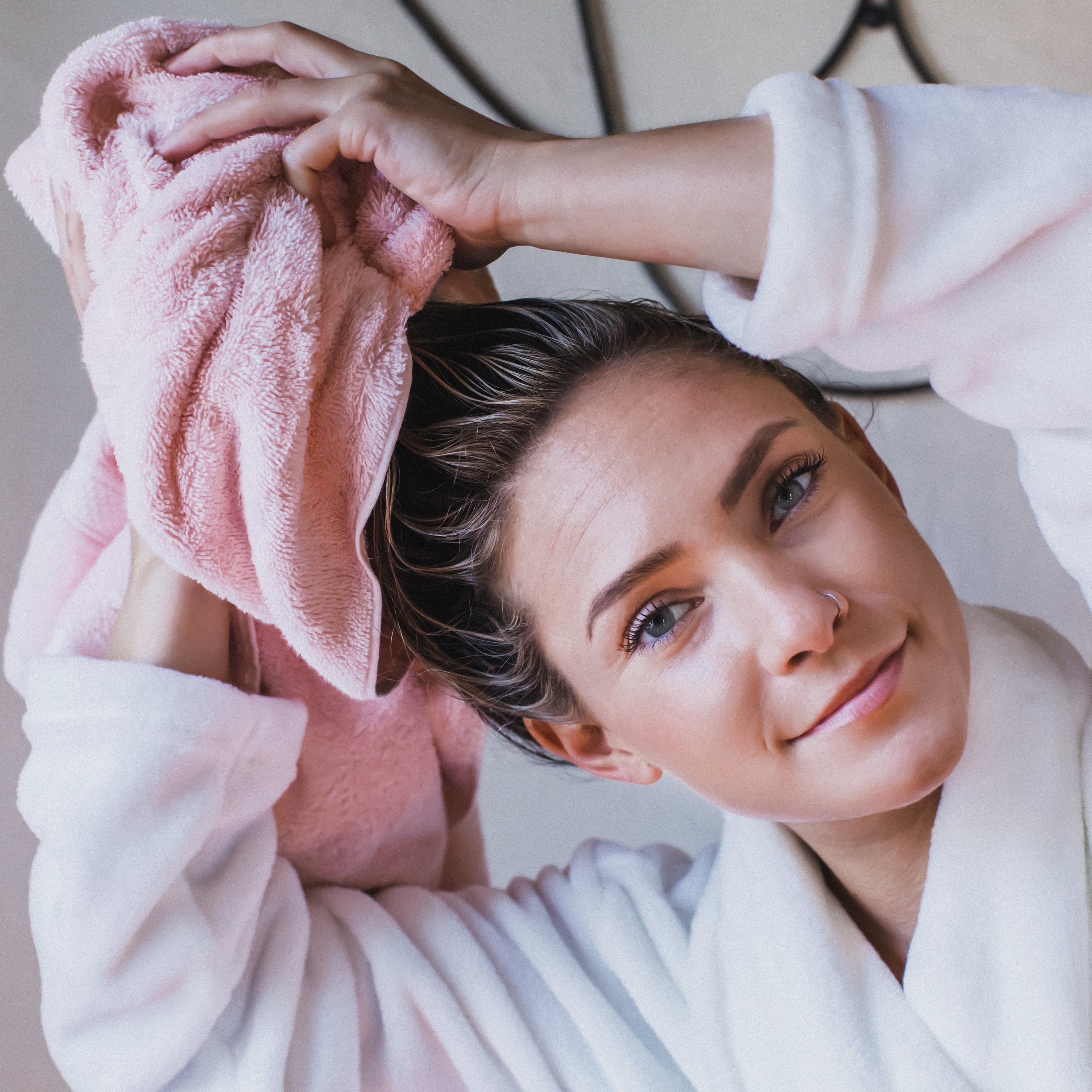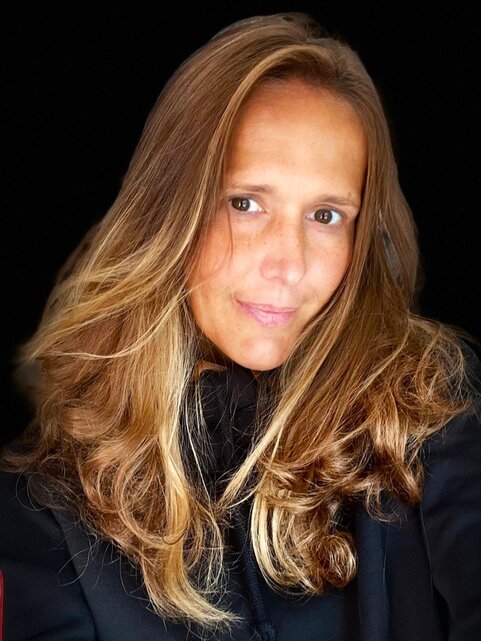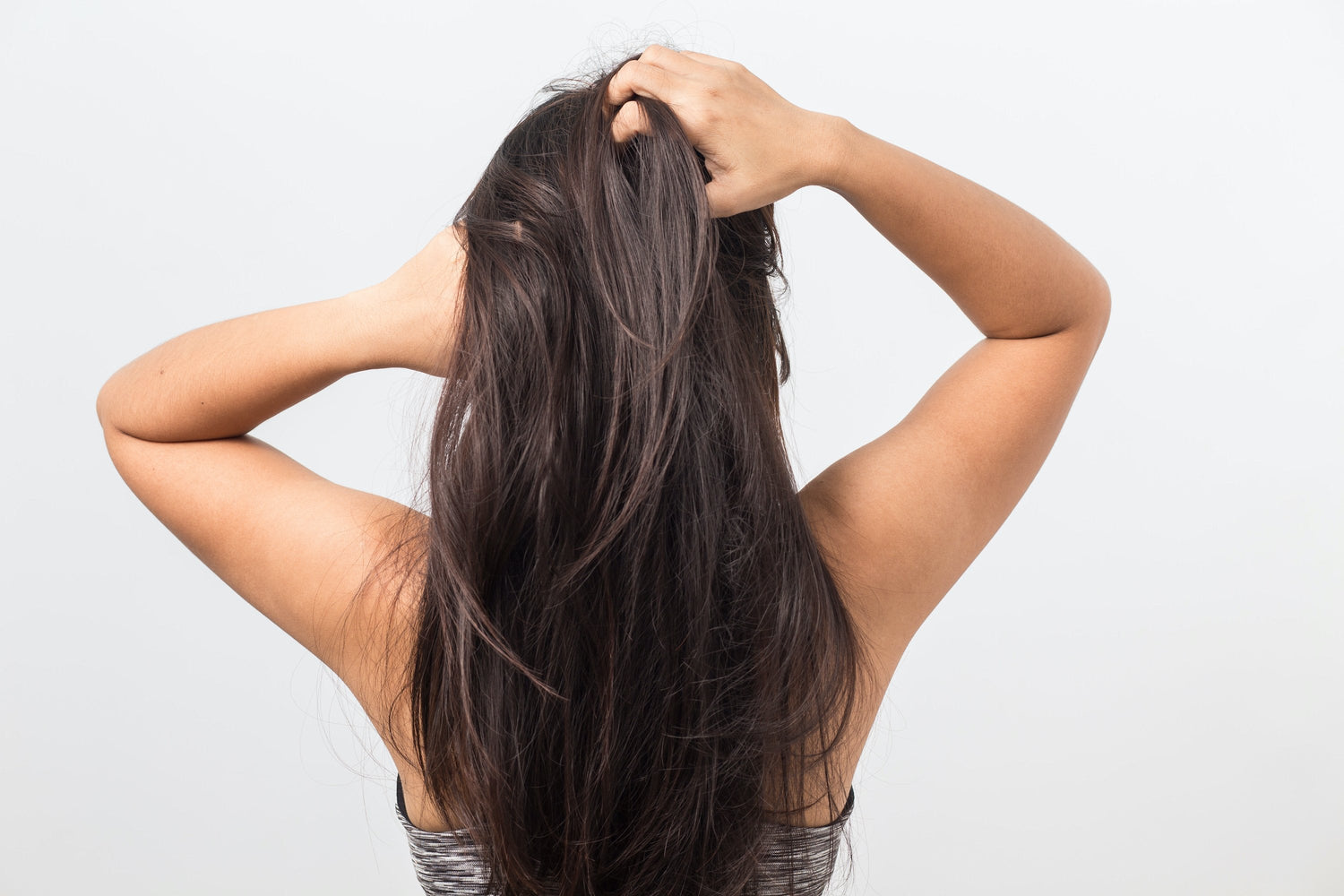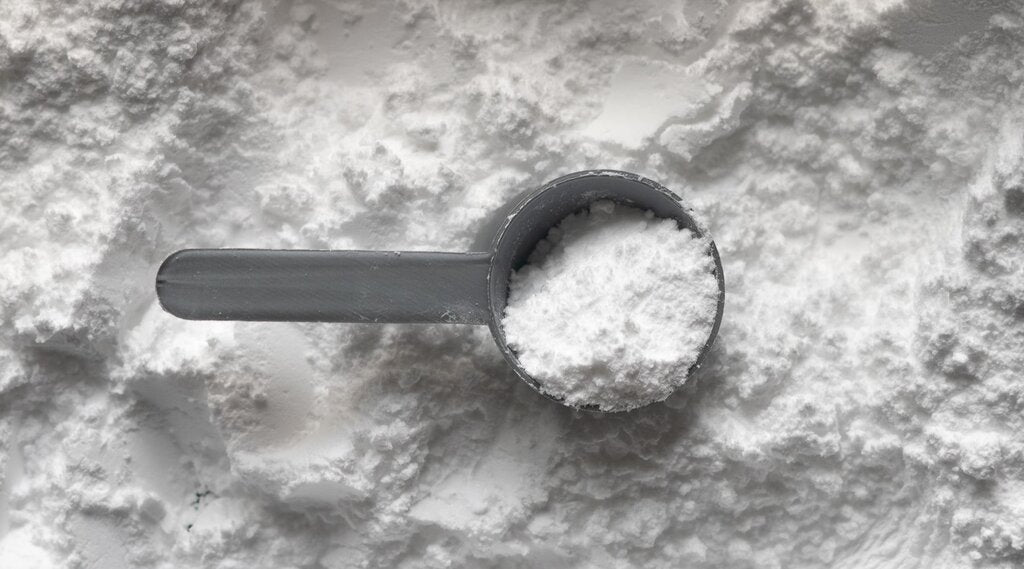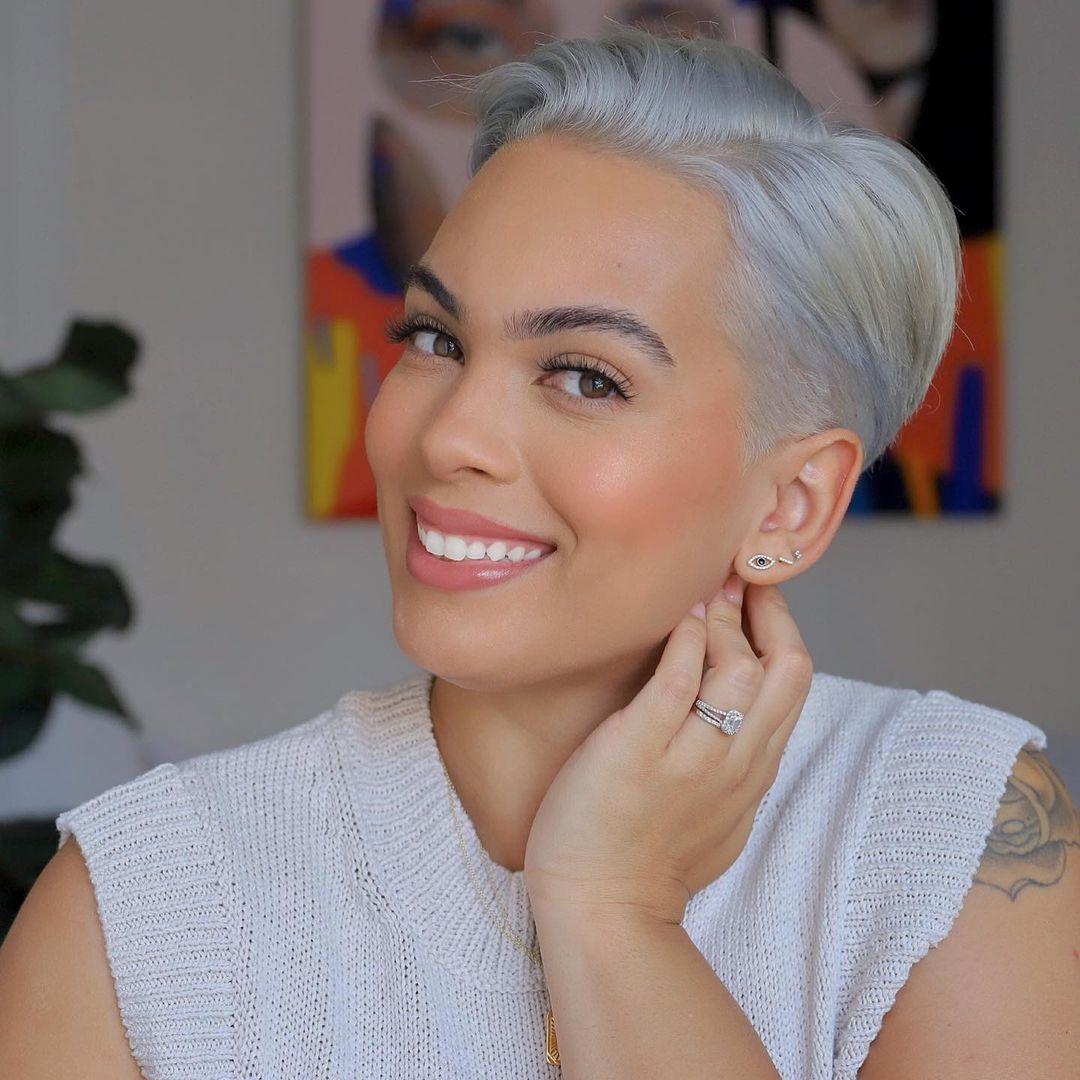Have you ever searched the shelves row after row to find a product to moisturize dry hair, fix breakage, or seal split ends? It may be obvious that breakage and split ends are a “sign” of damage but did you know brittle hair, coarse hair, dry scalp, flaky scalp, and frizzy hair are also signs of damage? In fact, I will clue you in on a secret- hair falling out is most often hair breaking off, not an actual medical condition! So, if you’re feeling concerned about your tresses, read on to learn more about the different types of damage your hair endures every day and how to fix damaged hair!
Here are 8 signs of hair damage:
- Dull hair – When the hair’s cuticles are damaged, light doesn't bounce back directly but is more scattered on damaged hair, so its shine fades. (See which of our products is best to make hair shinier!)
- Brittle hair, tangled hair – When the hair’s cuticles are damaged, loose cuticles can latch on to other fibers causing them to become “tied” together. This can make the comb snag and lead to breaking hair.
- Hair is frizzy and unmanageable – When the cuticle and cell membrane complex has been breached and loses its protective coating, damaged hair will absorb water differently which can lead to a bending and swelling of the fiber. This swelling can cause the cuticle fibers to stick up in the air or flyaway at a strange angle.
- Hair color fading – When the hair’s cuticle is damaged, color treatments can fade out easily.
- Dry hair–With a misaligned cuticle, damaged hair dries out more quickly than undamaged, resulting in straw-feeling hair.
- Split ends and hair breaking – While damaged hair makes combing harder it also becomes more likely to break, especially when using a styling instrument.
- Stiff hair – With age or even exercise, the hair texture can become rough and the hair can become stiff allowing less movement.
- Thinning hair – When visiting a dermatologist, oftentimes people who believe they’re experiencing increased hair fall (or hair loss) are experiencing increased hair breakage. The diameter of the hair shaft thins with age, making the hair feel thinner than it was when you were younger.
When shopping the shampoo aisle, do you ever notice how there’s one product for damage and a separate one to increase hair moisture? Dry hair means damaged hair. Thus, more diversity in hair care products against the damage source is needed. Damage affects all hair types, whether it’s fine hair, thick hair, wavy hair, or curly hair. Some people experience more hair damage than others but all hair has some type of damage that needs to be addressed.
What causes damaged hair?
Hair can be damaged from many different of sources. The main sources of damage can be simplified to what happens inside your body and outside your body.
The five main sources of hair damage are:
- Inside Your Body: Aging, stress, illness, and diet can all lead to hair damage. With aging specifically, the follicle diameter becomes smaller and produces less melanin which leads to graying. Meanwhile, oil glands shrink and produce oil less effectively. The cuticle becomes softer and can be damaged more easily. Recently, many people are looking into vitamins for hair as this has shown some promising results in treating thinning hair due to age.
- Environment: Exposure to UVA and UVB rays, pollution, humidity, glycation from sweat and swimming (in a pool or lake with hard water) can damage hair.
- Mechanical Effects: Hair can be damaged from everyday grooming such as washing, towel drying, brushing, combing, and teasing. Mechanical damage is sometimes also referred to as weathering.

- Styling tools: Heat styling with blow dryers, straightening irons, curling irons, or tongs can cause hair blistering, fried hair, and basically heat-damaged hair.
- Chemical damage: Colored hair, bleached hair, hair relaxers, and permed hair are some of the worst ways to damage hair (see below). In fact, perming can cause the hair to lose about 58% of its protein content which your hair needs to be strong!
Of course, some sources can be more damaging than another. Here is a helpful visual:

From left to right you can see the least damaging to the most damaging elements. Pollution and sun exposure can be the least problematic as to its damaging effects on the hair. Daily hair brushing and occasional use of styling products causes a minor amount of damage on its own. Blow drying is only slightly more damaging. Moderate damage can be caused by using something like a flat iron. Chemical treatments are much more damaging than the physically damaging things, but the degree of damage varies. Highlighting or coloring hair will produce a moderate amount of damage while things like bleaching and relaxing are the most damaging. Although exposing hair to chemicals causes greater levels of damage, daily grooming and frequent exposure to external rigors, leads to more rapid surface deterioration. The combination of each damage source can snowball causing hair health to quickly worsen. Truthfully, all of us is exposed to more than one of these at a time, so seeing the context of them individually is good, but does not show the comprehensive damage that each individual goes through.
Let’s take a really in-depth look at hair damage.
Let’s first look at healthy hair:

Notice how the hair has several cuticles, but they are all smoothed down and the diameter of the hair seems pretty consistent throughout? Below you will see several images of a damaged hair shaft and that will help you see what happens to these creases and the diameter of the hair.
Raw material supplier, Croda, identified several different types of physical hair damage through the use of scanning electron microscopy.
These rarely discussed types of damage they identified include:
- Abrasion
- Buckling
- Cracking
- Crazing
- Blistering
What is Abrasion?

Abrasion causes damage where cuticles are rubbed off and the hair’s surface is worn. This can result in weakened hair that breaks easily. Abrasion can be caused by internal, mechanical, environmental, and chemical sources.
What is Buckling?

Buckling, also known as cuticle lifting or decementation, causes the cuticles to loosen, lift off the surface, and pull away from the hair fiber, ultimately exposing the cortex. It can cause snagging, tangles, and broken fibers. The primary source of buckling is from internal influence, mechanical effects, and chemical use in hair.
What is Cracking?

Long, lengthwise cracks visible at any point along the hair fiber is called cracking. Although this can include split ends, the cracks can be seen anywhere along the hair shaft. It can also be called longitudinal cracking or shear band formation. Hot styling tools, chemical use, and mechanical forces are among the sources of cracking.
What is Crazing?

Crazing is when part of the cuticle becomes fused to the surface below it and can no longer flex well. The cuticles become scratched and splintered, easily chipping away. Crazing is specifically caused by hot styling tools and heating the hair for too long.
What is Blistering?

Blistering is when hair “bumps” or blisters form caused by hot tools. Eventually, these bubbles pop leading to disjointed scales with an irregular texture that causes split ends and tangles. Blistering is also known as bulges and craters and is caused exclusively by hot styling tools.
All hair concerns can be traced back to damage
How do I fix damaged hair?
Building bonds, adding nutrients, and offering the right ingredients; as well as establishing better habits are some of the best ways to repair this damage. While MANY hair products on the shelf will promise to do some version of these, you likely won’t find any product that will target your specific type of hair damage due to your own lifestyle and hair choices. Let’s be honest, you just don’t find that kind of unique customization with haircare!
However, within the last few years, that’s exactly what we’ve done.
Your hair care should be as unique as the type of damage that’s being done. You may not even be aware of how damaging your routines are to your hair. And if you’re like most people, you probably don’t want to start changing up your whole routine to bring it back to life.
To solve your hair damage problems, most hairstylists will tell you the same things:
- Get your hair cut regularly, especially above the major breakage points.
- Use a thermal protectant before using any heat tools.
- Air dry when possible.
- Never brush your hair when totally wet, blow dry to about 75% first and then use a gentle round brush.
- Don’t wash your hair every day, space it out to every few days if possible.
So, let me ask you, which one of these seems like it just doesn’t fit what you really want for your hair?
To be honest, doing all of these can be a lot of work or don’t fit into your style or lifestyle. Many women don’t have the time to air dry, nor the style to have a short cut all of the time. And what if you are an avid swimmer or so physically active that your hair gets sweaty every day, meaning you need to wash it every day? These practices can be limiting to your life!

The SAVE ME FROM Tip to Root Hair Reboots™ are meant to be empowering and offer you a way to actually repair damage being done (rather than just cutting it off) and protect it from future damage. Here is how we are able to solve those damage issues you encounter:
FENUGREEK TRANSFORMED INTO FENUGEN™- Improves shine, strength, and elasticity
Fenugreek is a natural herb used for thousands of years in Indian Ayurvedic medicinal practices for many different ailments: stomach problems, eczema, and low lactation for breastfeeding mothers. What really struck our interest was the use of fenugreek paste as a hair mask by Indian women to promote hair growth , strengthen hair, create shinier hair, loosen tangly hair and treat dandruff.1 This ancient practice has been passed down for many generations for one reason: it works! We’ve found the perfect way to eco-extract fenugreek seeds to enhance their use and add it to all of our reboots in our patent-pending Fenugen™ formula. We source our fenugreek from Fair Trade farms near the Blue City in India.

CAFFEINE- Thickens, hydrates, and protects
Most studies have focused on how caffeine affects the body when ingested. Some use caffeine to treat migraines or persistent fatigue. However, as a topical ingredient, caffeine has shown to penetrate the skin faster and more effectively than any other stimulant. Thinning hair is most often due to an increase in the production of the enzyme 5-a-reductase, and caffeine directly inhibits this production causing your hair to thicken as it grows out. Not only this, but blood flow improves with caffeine on the scalp, which creates a healthier environment for your hair to grow to its potential. Caffeine has also shown to protect your hair from harmful UV rays, which keeps your scalp from drying out and stops the cells from being irreparably damaged.2
See more on the benefits of caffeine for your hair!
CREATINE- Bond-building, strengthening
Known for its muscle building properties, creatine also works as a bond-builder for disulfide and hydrogen. When you damage your hair, you break these bonds, resulting in dull hair, brittle hair, and fragile hair. Hair breaking is the most common complaint and can be confused with hair falling out! Creatine offers your hair the opportunity to build those bonds again, giving it the strength, it needs for your unique lifestyle.
SILK PROTEINS- Protection without interruption
By now, many of us have heard about the benefits of keratin, but how much do you know about silk proteins? Silk has historically been regarded as a delicacy in creating beautiful fabrics. It has also been used for various hormone research and the pupae is eaten in many cultures. What we’ve come to learn about the proteins, sericin and fibroin, in silk is that it acts as a silk glue and glycoprotein. Ultimately, what this means is that your hair’s cortex is with this protein, protecting it without disturbing your self-expression through dying and coloring.
PANTHENOL- Vitamin infuser, conditioning
Of our rebuilding ingredients, panthenol the one that is most commonly used in many haircare products. It is regarded as very safe and is used primarily in conditioners and shampoos. It infuses the hair with a necessary Vitamin B5, increasing its overall nourishment and health. Little known secret about Panthenol in haircare products- in a course of less than 20 years, hair care companies have increased its use by up to 5 times.3 We think that’s because it’s been shown to work incredibly well in benefitting your hair!

Have you ever heard the phrase that “you can’t unknow something you know”? We hope that this information has offered you some kind of insight about your hair problems, but we understand the frustration in knowing the problem without a way to solve it! That’s why we decided to offer you damage-specific products that will solve your hair concerns.
The Ayurvedic Spice That's Changing Everything
It's worth mentioning the hair reparative benefits of Fenugen. Inspired by Ayurvedic medicine, we've harnessed the fenugreek's rich phytonutrients including medium and long chain fatty acids, terpenoids, polyphenols, phospholipids and vitamins A, C and B variety vitamins and paired these with bio-boosters like ubiquinone (also known as Coenzyme Q10 for hair), organic karanja (also known as pongamia) and medicum chain triglycerides (MCT’s derived from coconut). Through a patented eco extraction process, we've magnified these phytonutrients into our clinically proven technology. Fenugen possesses the rich nutrients of fenugreek seeds in a complex 5x more potent in polyphenols. These nutrients include Vitamin A, B Vitamins, Vitamin C and more. Fenugen is a good source for important biothiols that protect your hair from oxidative damage and rebuild disulfide bonds. Bleach, color, chemical services & heat cause internal disulfide bonds to break, leaving your hair weak, brittle & damaged. With Bond Reboot’s creatine, ionic bonds are also restored, making the hair stronger even when wet. Our Reboots quickly reduces split ends and reduce hair breakage while nurturing new hair that’s more resistant to future damage. With consistent, long-term use, hair bonds are rebuilt, hydration is restored helping to reduce frizz, the scalp is energized and nourished from within allowing hair that's more resistant to damage to emerge. Rooted in Ayurveda, our Fenugen is clinically proven to transform hair from tip to root, inside and out.
***
-
Gupta A, Malviya R, Singh PT, Sharma KP. Indian Medicinal Plants Used in Hair Care Cosmetics: A Short Review. Pharmacognosy Magazine. 2010;2(10):361-364.
-
Herman A, Herman A. Caffeine’s Mechanisms of Action and Its Cosmetic Use. Skin Pharmacology and Physiology. 2012;26(1):8-14. doi:10.1159/000343174.
-
Annual Review of Cosmetic Ingredient Safety Assessments—2004/20051. International Journal of Toxicology. 2006;25(2_suppl):1-89. doi:10.1080/10915810600964618.


